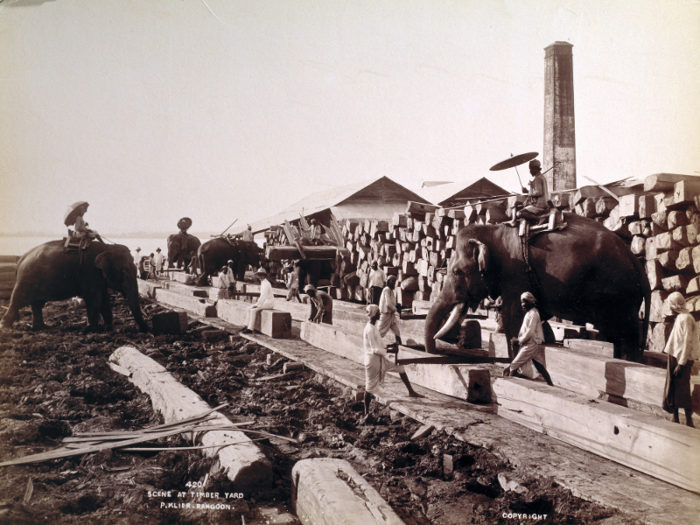

Source: Nature Communications

Source: United Nations FAO

Once they're retired, the captive elephants still get cared for by veterinarians and handlers, but they don't do any more daily chores.



Many mahouts are from the Kayin tribe, an ethnic group of roughly 2 to 5 million people who traditionally hail from the southeast corner of Myanmar.

Mahouts have a dangerous and physically demanding job caring for these wild creatures. Mahout deaths are not uncommon in Myanmar and Thailand.


Elephants make up for their bad eyesight with highly developed senses of smell and touch. Their trunks have more olfactory receptor genes than any other animal — which gives them more than double the scent-detection ability of a bloodhound. Elephants can sniff out bombs, and their trunks are amazing earthquake detectors, too.


I was amazed at how well elephants can sniff out food. No sooner was chow in my hands, than the creatures were angling with their neighbors for first dibs.





In the afternoon, the elephants are led out to graze in local fields outside of the camp, which can be a nuisance for the farmers if the animals step foot outside their designated areas.
There are no fences or holding pens at Green Valley, but if elephants from the camp raid local banana plantations, the camp pays farmers for the damages.

Source: PLOS One

The check-ups involve routine blood and stool samples and checks for parasites. Than also feeds the animals de-worming pills as needed. Those medicines are made for cows, so he just ups the dose to be elephant-sized.







The trainers reminded me that even though we'd spent hours close to the animals, they are still wild creatures that behave in unpredictable ways.


Source: BBC

These 5-year-old trees will need another 20 years or so to mature fully.


The elephants sometimes don't find much to eat outside the camp; when that happens, they show up eagerly the next morning, awaiting breakfast.

After the elephants went out to the forest, I also left the camp, still in awe of their trunks — the boneless appendages that help elephants sniff out food and approach new people like me.
I took a few pieces of elephant poop-fiber paper as a souvenir.
 I quit McKinsey after 1.5 years. I was making over $200k but my mental health was shattered.
I quit McKinsey after 1.5 years. I was making over $200k but my mental health was shattered. Some Tesla factory workers realized they were laid off when security scanned their badges and sent them back on shuttles, sources say
Some Tesla factory workers realized they were laid off when security scanned their badges and sent them back on shuttles, sources say I tutor the children of some of Dubai's richest people. One of them paid me $3,000 to do his homework.
I tutor the children of some of Dubai's richest people. One of them paid me $3,000 to do his homework. Why are so many elite coaches moving to Western countries?
Why are so many elite coaches moving to Western countries?
 Global GDP to face a 19% decline by 2050 due to climate change, study projects
Global GDP to face a 19% decline by 2050 due to climate change, study projects
 5 things to keep in mind before taking a personal loan
5 things to keep in mind before taking a personal loan

Copyright © 2024. Times Internet Limited. All rights reserved.For reprint rights. Times Syndication Service.